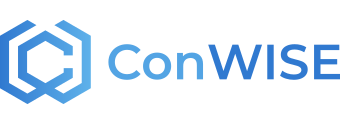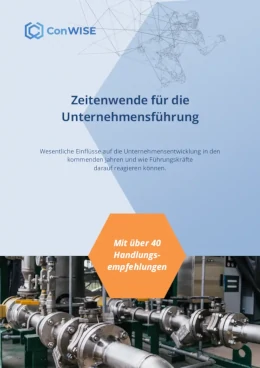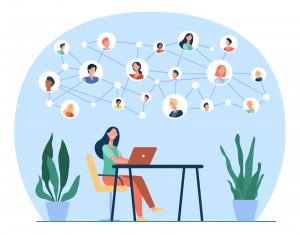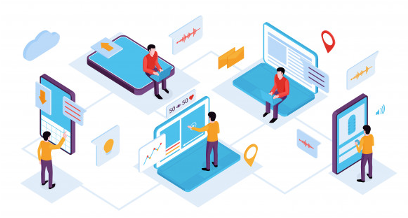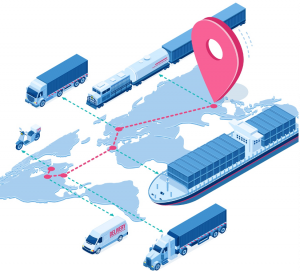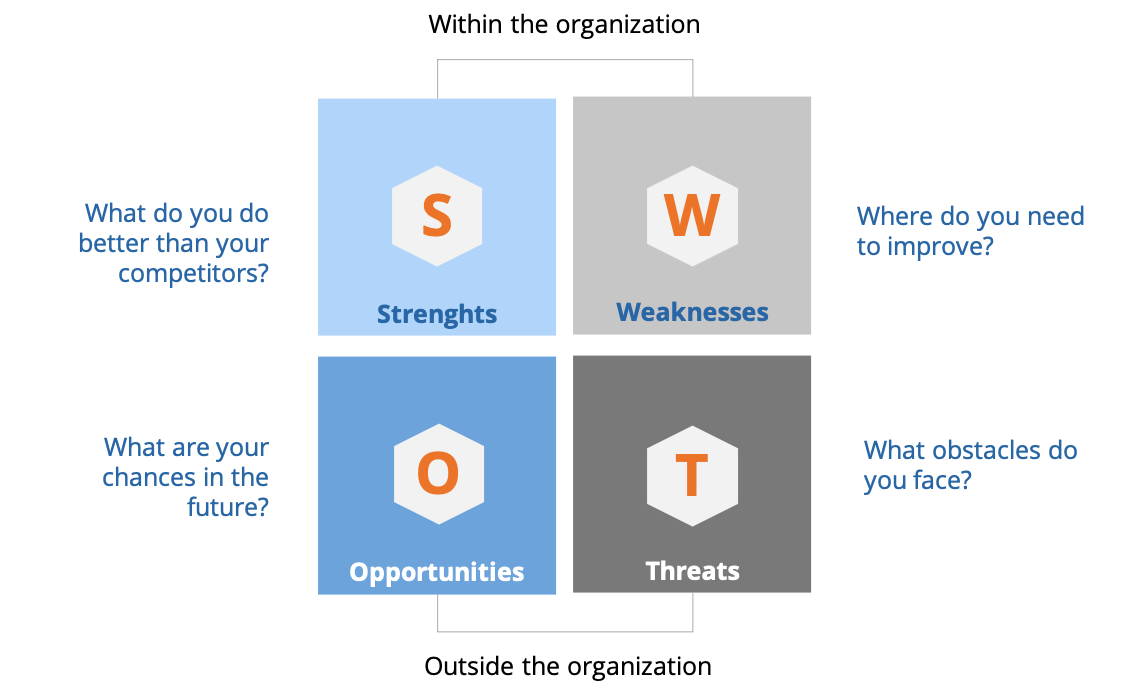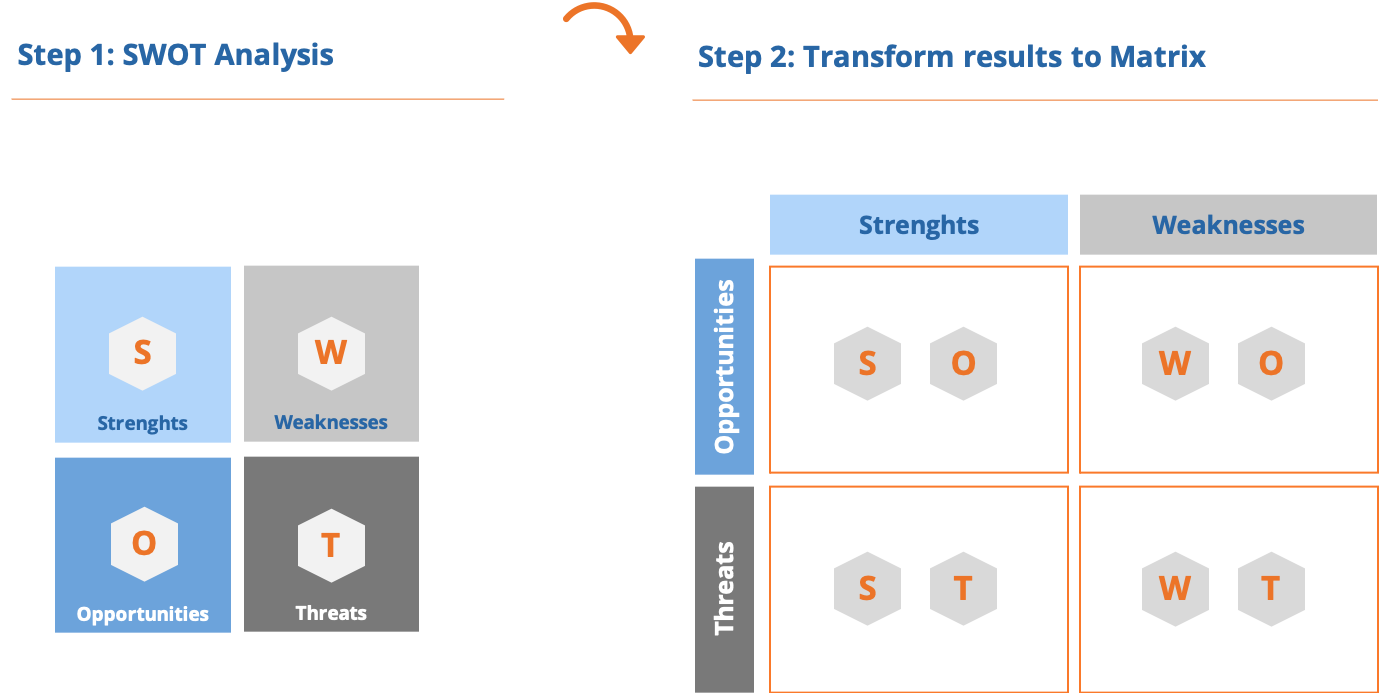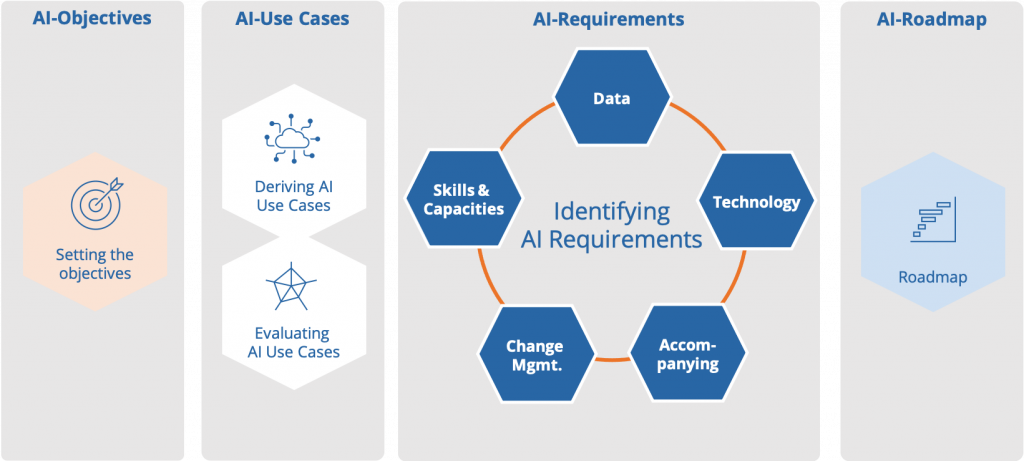A turning point in strategic corporate management
We are currently experiencing a turning point, both politically and socially. Previously valid norms and modes of action are being questioned. Yesterday’s common practice is stopped today. But what does that mean for companies? Does corporate leadership need to rethink? Yes, a turnaround in strategic corporate management can already be seen today.
The business environment is changing significantly
Whether it is new spending in the billions on military defence (Capital, 28.2.2022), an acceleration of the energy turnaround (SZ, 28.2.2022), or the strengthening of the semiconductor industry in Europe (EU, 8.2.2022): not all of this comes as a surprise, but we are now challenged to master several challenges simultaneously. In order to achieve this, managers must fundamentally question their actions and adapt them quickly. In short: the corporate world is also facing a turning point. Regardless of whether it is a medium-sized company or a corporate group, corporate management under the yardstick of constant economic growth is a thing of the past.
A turning point in strategic corporate management – What are the triggers?
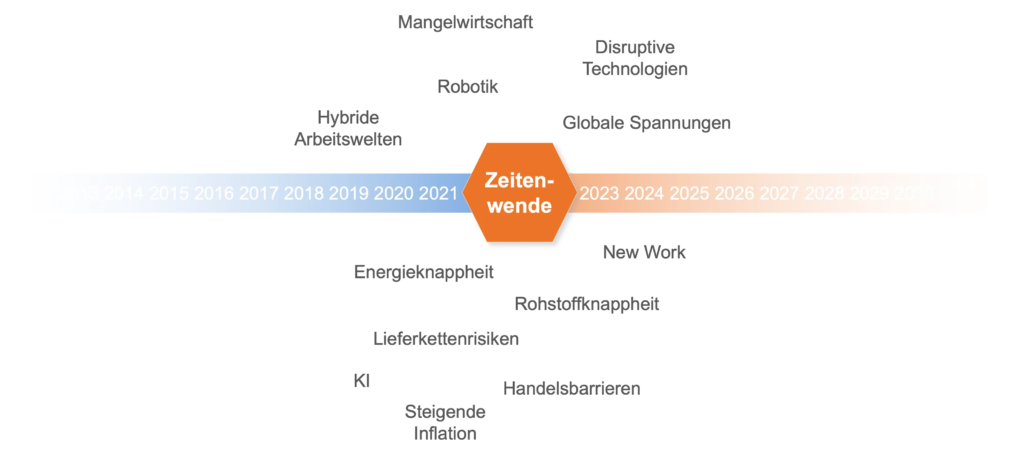
Trigger of turning point in strategic corporate management
Some changes and influencing factors have been known for some time, such as demographic change with its effects on the skilled labour situation. The call for sustainable and environmentally conscious management is also not new. What is new, however, is the emphasis on how these changes are now being demanded by politics and society. Awareness of change and its consequences has also increased. This brings opportunities, but also risks. One example: Since COVID-19, the topic of digitalisation has definitely been at the top of companies’ agendas. At the same time, however, the dangers of cyberattacks are also increasing. In many areas, we are only at the beginning of the technological possibilities. Those who lose touch here will lose competitiveness. As of today, we see the main drivers as follows:
- Increasing signs of scarcity economy.
- Accumulation of problems in the supply chains of many companies.
- Increase in global tensions.
- Uncertainties in the energy supply in the coming years until the complete conversion from fossil to renewable energy sources.
- Ongoing climate change.
- Increasing digitalisation is leading to new disruptive technologies in the market.
- Short-term establishment of a new hybrid working world.
- Ongoing skills shortages require new approaches to dealing with them.
Each of the drivers of the turnaround identified here would in itself have a considerable influence on the orientation of companies. But it is precisely the sum of the influences that will massively change companies.
How can companies and managers respond to this?
Managers are now challenged to strategically question or even reposition their company. A primary goal is to strengthen a company’s resilience in order to cope with temporary shocks in the value chain. Not only internationally active corporations, but also small and medium-sized enterprises now need an adapted strategy for the coming years. And not as an end in itself, but for your employees, customers and investors. This is because a change of era always creates uncertainties among those involved, which are best countered with clear strategic corporate management.
We advise leaders not to waste time. Start strategically repositioning your company now. You don’t need a big throw to do that. It is important that you define the strategic guard rails at the beginning. Based on this, you will develop the corresponding initiatives. So they take an iterative approach instead of just holding a one-off strategy workshop. It is important that you document your strategic work results, because only then will they be concrete, understandable and lived by everyone in the company. Involve your own employees as well. They know your company and the market environment best – even better than some external consultants. They often already have an idea of what concrete solutions and measures could look like. In addition, changes in which the own employees were involved are also supported. You can also read more about this in our blog article Concretising a strategy for successful implementation.
Our detailed white paper on the turning point in strategic corporate management
We have described all the above influences in detail in a white paper. To this end, we have compiled a large number of strategic recommendations for action. Here you can download the document free of charge (German version).
If you want to start creating your strategy now, the ConWISE platform can support you with the individual steps. Test the easy-to-use application with a free user account. If you have any further questions, please do not hesitate to contact us.
